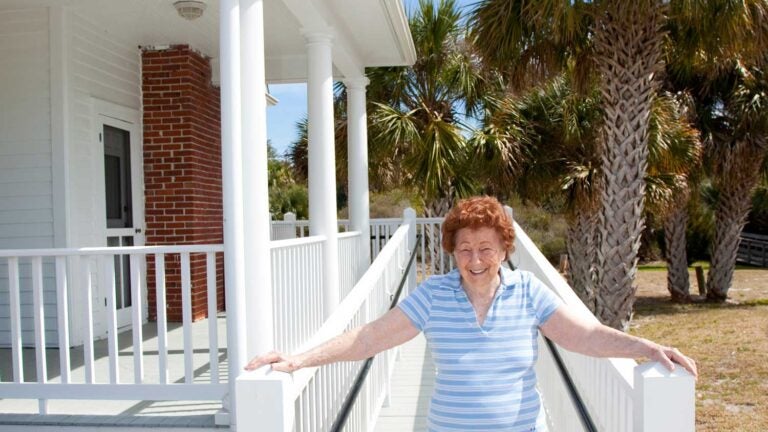
Installing handrails and making sure walkways are clear are two ways to help elderly residents avoid accidents in their home. (Photo/Shutterstock)
How small changes can help older adults stay safe at home
By making simple modifications, people can prevent accidents, reduce health care costs and support independent living
The overwhelming preference of adults 65 and over is to age in the comfort of their home.
Extensive home modifications have an average cost of up to $1,300 — a pretty penny for retirees — but Jon Pynoos, the UPS Foundation Professor of Gerontology at the USC Leonard Davis School of Gerontology, said that older adults and caregivers can start smaller, such as:
- Install stair railings to both sides of interior stairways.
- Install grab bars in the shower.
- Purchase a raised toilet seat with side bars for support.
- Improve lighting around the house (stairs, pathways, porches, doorways, closets).
By making simple home modifications, older adults can prevent accidents, reduce health care costs and support independent living, said Pynoos, who spoke at this year’s USC Morton Kesten Summit, a gathering of national experts addressing the needs of individuals aging in place.
While the cost of making modifications is proven to be significantly lower than potential medical costs due to accidents in the home, the majority of older adults and caregivers struggle with making adjustments to their homes for various reasons.
Many are unable to do it themselves, others can’t afford to make improvements, some don’t know how to make changes or they believe contractors are untrustworthy, Pynoos said.
Assessment and delivery
Information and assessments provided by health care professionals can help older adults take note of needed improvements in their home to enhance their quality of life. Pynoos said that training paramedics or emergency medical technicians has promise.
“First responders go to the home after the fall. They spend 10 or 15 minutes there and they can do a quick home assessment or provide more information,” he said.
Pynoos is the director of the National Resource Center on Supportive Housing and Home Modification, and co-director of the Fall Prevention Center of Excellence.
